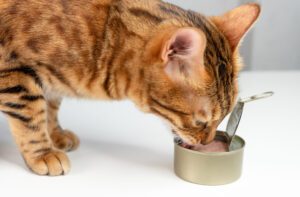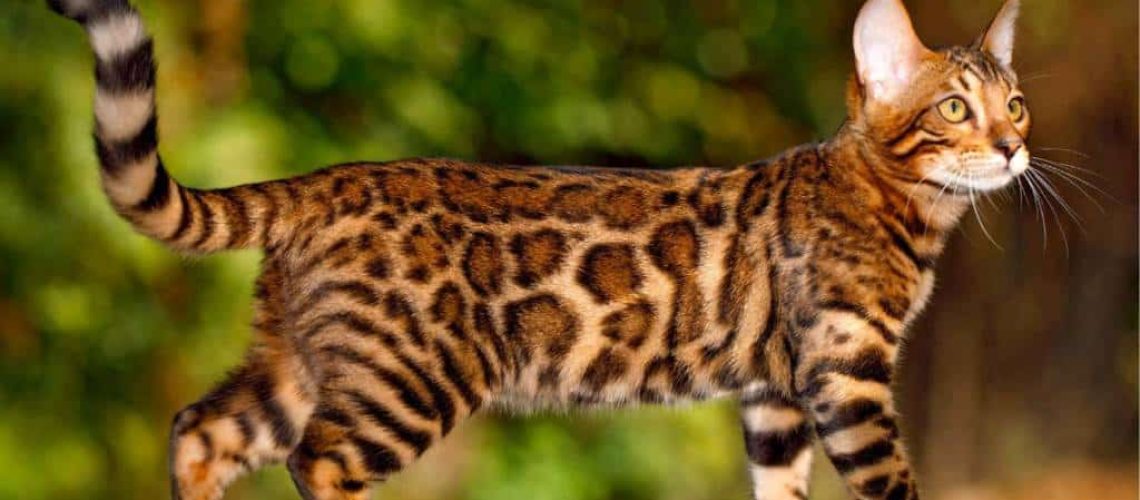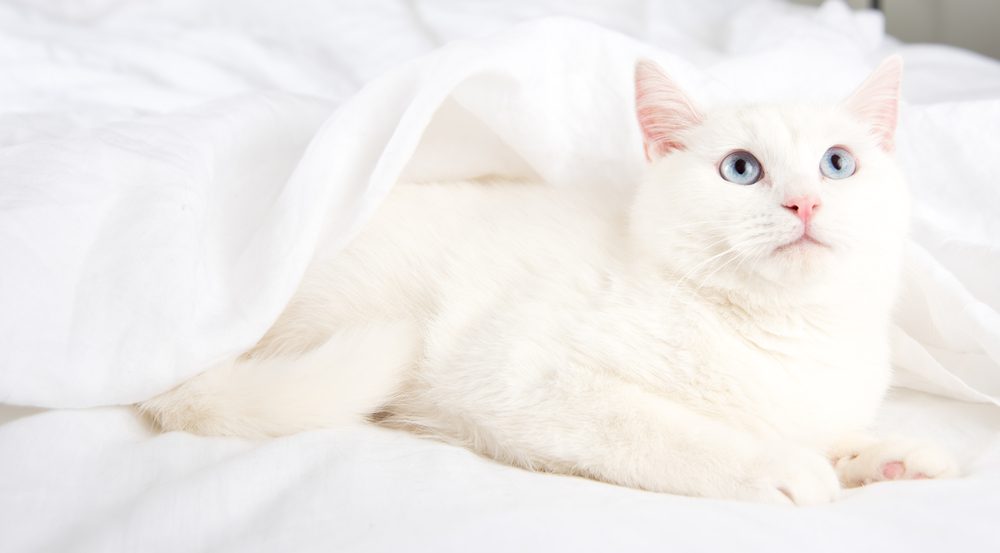Are you ready to embark on a wild adventure? If you're curious about Bengal cats, get ready to uncover the secrets behind their mesmerizing looks and loving hearts. Exploring this subject will not only bring joy to your day but also provide you with valuable insights into the fascinating world of these unique felines. Whether you're a cat lover or simply intrigued by nature's wonders, understanding Bengal cats is essential to appreciating the beauty and diversity of our animal kingdom. Join us as we dive into the captivating realm of Bengal cats and discover why they are truly wild at heart.
Key Takeaways:
- Bengal cats have a wild appearance due to their unique coat patterns resembling that of leopards and cheetahs.
- Despite their wild looks, Bengal cats are domesticated and make great companions for families.
- Bengals are highly active and require plenty of mental and physical stimulation to prevent boredom.
- These cats are known for their intelligence and can be easily trained to perform tricks or use a litter box.
- Regular grooming is necessary for Bengal cats to maintain the health and beauty of their luxurious coats.
What are Bengal cats and why are they known as having "wild looks with a domestic heart"?
Bengal cats are a unique breed known for their distinctive appearance and playful nature. They have a wild-looking coat pattern that resembles that of a leopard or jaguar, which is why they are often described as having "wild looks with a domestic heart." Despite their exotic appearance, Bengal cats are actually domesticated and make great companions.
The term "wild looks with a domestic heart" refers to the fact that Bengal cats have inherited their striking coat pattern from their wild ancestors, the Asian leopard cat. This gives them an air of wildness, but in reality, they have been bred for generations to be friendly and affectionate towards humans. Bengal cats love attention and enjoy being part of the family.
Their beautiful coat comes in various colors such as brown, silver, and snow. It is covered in spots or marbled patterns, which adds to their wild appearance. However, it's important to note that not all Bengal cats have the same coat pattern. Some may have more distinct markings while others may have a more subtle pattern. Overall, Bengal cats are truly unique in both their appearance and personality.
Where do Bengal cats come from, and what makes their ancestry unique?
Bengal cats originated from breeding domestic cats with the Asian leopard cat (ALC), a small wild feline found in Asia. The goal was to create a breed that had the stunning appearance of a wild cat but retained the temperament of a domesticated feline. This selective breeding process began in the 1960s by an American breeder named Jean Mill.
The unique aspect of Bengal cat ancestry lies in their connection to the ALC. Unlike other domestic cat breeds that were developed through natural selection over thousands of years, Bengals have a more recent link to their wild ancestors. The ALC contributes to their distinctive coat pattern, muscular build, and energetic nature.
Through careful breeding and selection, breeders have been able to create a breed that maintains the wild appearance of the ALC while having a friendly and sociable temperament. This combination of wild heritage and domestication makes Bengal cats truly one-of-a-kind.
How do Bengal cats look different from other types of domestic cats?
Bengal cats stand out from other domestic cat breeds due to their unique physical features. One of the most striking differences is their coat pattern. Bengals have a spotted or marbled pattern on their fur, which resembles that of a leopard or jaguar. This distinctive coat sets them apart from other cats.
In addition to their coat pattern, Bengal cats often have a muscular build and are more athletic compared to many other domestic cat breeds. They have long legs and a sleek body that gives them an agile appearance. Their head is also slightly smaller in proportion to their body, with rounded ears that add to their wild look.
Another physical characteristic that distinguishes Bengal cats is their eyes. They typically have large, expressive eyes that can be green or gold in color. These captivating eyes contribute to the overall wild and alert expression seen in Bengal cats.
Overall, Bengal cats possess a combination of elegance, strength, and exotic features that make them visually distinct from other types of domesticated felines.
What personality traits and behaviors are Bengal cats known for?
Bengal cats are known for being active, playful, and curious creatures. They love exploring their surroundings and engaging in interactive play with toys or even household items. Their high energy levels make them excellent companions for individuals or families who enjoy an active lifestyle.
These feline friends are also highly intelligent and require mental stimulation to stay happy. They enjoy puzzle toys, treat-dispensing games, and learning new tricks through positive reinforcement training. Bengal cats are quick learners and can even be taught to walk on a leash or perform tricks like sitting, shaking paws, or jumping through hoops.
While they are energetic and adventurous, Bengal cats also have a gentle and affectionate side. They form strong bonds with their human companions and enjoy being part of the family. Bengals often seek out attention and may follow their owners around the house. They are known for their vocalizations and may communicate with chirps, trills, or purrs to express their contentment or desire for interaction.
It's important to note that Bengal cats thrive in an environment where they have plenty of mental stimulation and opportunities for play. They require interactive playtime with their owners and benefit from having access to scratching posts, climbing trees, and toys that simulate hunting behaviors.

What kind of care and attention do Bengal cats need to be happy pets?
To keep Bengal cats happy and healthy as pets, they require specific care and attention. Here are some key aspects to consider:
1. Exercise: Bengal cats have high energy levels, so providing them with regular exercise is essential. Interactive play sessions using toys that allow them to chase, jump, and climb can help fulfill their need for physical activity.
2. Mental Stimulation: These intelligent felines need mental stimulation to prevent boredom. Puzzle toys, treat-dispensing games, or clicker training sessions can keep their minds engaged.
3. Enriched Environment: Creating an enriched environment is crucial for Bengal cats' well-being. This includes providing scratching posts, climbing trees or shelves, hiding spots, and interactive toys to mimic natural hunting behaviors.
4. Regular Veterinary Care: Like all pets, Bengal cats should receive regular veterinary check-ups to ensure they are in good health. Vaccinations, parasite prevention treatments (such as flea control), dental care, and annual wellness exams are important aspects of responsible pet ownership.
5. Proper Diet: Feeding Bengal cats a well-balanced and appropriate diet is essential for their overall health. Consult with a veterinarian to determine the best food options based on their age, weight, and any specific dietary requirements.
6. Social Interaction: Bengal cats enjoy socializing with their human companions. Spending quality time with them, providing affection, and engaging in interactive play can help strengthen the bond between cat and owner.
By fulfilling these care requirements, Bengal cats can lead happy and content lives as cherished pets.
Can Bengal cats be trained like dogs, and what tricks can they learn?
Yes, Bengal cats can indeed be trained like dogs! They are highly intelligent and enjoy learning new things through positive reinforcement training methods. With patience, consistency, and rewards such as treats or praise, you can teach your Bengal cat various tricks.
Here are some tricks that Bengal cats are capable of learning:
1. Sit: Teaching your Bengal cat to sit is a basic yet useful trick. Hold a treat above their head while giving the verbal command "sit." When they naturally lower their rear end into a sitting position, reward them with the treat.
2. Shake Paws: This trick involves teaching your cat to offer its paw for a handshake. Start by gently touching their paw while saying "shake" or a similar command. Reward them with a treat when they respond by lifting their paw towards you.
3. Jump Through Hoop: Using a small hoop or even an arm formed into a circle, encourage your Bengal cat to jump through it by holding treats on the other side. Gradually raise the hoop higher as they become more comfortable with jumping through it.
4. High Five: Similar to shaking paws, this trick involves teaching your cat to raise its paw but in response to the command "high five." Use treats and positive reinforcement to reward them when they successfully lift their paw towards you.
5. Walk on a Leash: Bengal cats can be trained to walk on a leash, allowing them to explore the outdoors safely. Start by introducing them to a harness and leash indoors, rewarding them with treats as they become comfortable wearing it. Gradually move to outdoor walks in a controlled environment.
Remember, training should always be done using positive reinforcement techniques and in short sessions to keep your Bengal cat engaged and interested. With consistency and patience, you can have fun teaching your Bengal cat an array of tricks!
Are there any health concerns or special considerations when owning a Bengal cat?
While Bengal cats are generally healthy, there are a few health concerns and special considerations for owners to be aware of:
1. Hypertrophic Cardiomyopathy (HCM): This is a heart disease that can affect Bengal cats, as well as other breeds. Regular veterinary check-ups and screenings can help detect early signs of HCM.
2. Progressive Retinal Atrophy (PRA): PRA is an inherited condition that affects the eyesight of Bengal cats. Responsible breeders will screen their breeding cats for PRA to reduce the risk of passing on this condition.
3. Exercise Needs: Due to their high energy levels, Bengals require ample exercise and mental stimulation. Without enough physical activity or mental enrichment, they may become bored or develop behavioral issues.
4. Environmental Enrichment: Bengal cats thrive in an enriched environment with plenty of climbing opportunities, scratching posts, and interactive toys. Providing these resources helps prevent destructive behaviors caused by boredom.
5. Potential Allergies: Some individuals may be allergic to certain proteins found in cat saliva or dander, including those produced by Bengal cats. If you or someone in your household has allergies, spend time with a Bengal cat before bringing one into your home to see if any allergic reactions occur.
It's important to choose a reputable breeder who prioritizes the health and well-being of their cats. Regular veterinary care, a balanced diet, and a stimulating environment are key to ensuring your Bengal cat leads a happy and healthy life.
How popular are Bengal cats as pets, and what should you consider before getting one?
Bengal cats have gained popularity as pets due to their unique appearance and playful nature. Many people are captivated by their wild looks combined with a domesticated temperament. However, before getting a Bengal cat, there are several factors to consider:
1. Time and Attention: Bengal cats crave attention and interaction from their owners. They may become bored or develop behavioral issues if left alone for long periods of time. Make sure you have enough time to dedicate to their care and playtime.
2. Energy Levels: Bengals are highly energetic cats that require plenty of exercise and mental stimulation. If you prefer a more laid-back or low-energy pet, a Bengal may not be the best fit for your lifestyle.
3. Space Requirements: These active felines benefit from having ample space to roam, climb, and play. Providing them with an enriched environment that includes scratching posts, climbing trees, and toys is essential.
4. Cost: Bengal cats can be more expensive than other domestic cat breeds due to their unique appearance and demand. Additionally, they may have specific dietary needs or require regular grooming, which adds to the cost of ownership.
5. Allergies: As mentioned earlier, some individuals may be allergic to certain proteins found in cat saliva or dander, including those produced by Bengal cats. Ensure that no allergies exist within your household before bringing home a Bengal cat.
6. Responsible Breeder: It's crucial to select a reputable breeder who prioritizes the health and well-being of their cats. Research breeders carefully, visit their facilities if possible, ask about health testing protocols they follow, and ensure they provide proper socialization for their kittens.
By considering these factors and doing thorough research, you can determine if a Bengal cat is the right pet for you. If you have the time, energy, and resources to meet their needs, Bengal cats can make wonderful companions and bring joy to your home.
In conclusion, Bengal cats are a unique breed that combine wild and domestic traits. With their striking appearance and friendly nature, they make great companions for families looking for something a little different in a pet.
What 2 breeds make a Bengal cat?
The Bengal is a cat breed that was created in the 1990s in the United States. It was developed by breeding the Asian Leopard Cat, a small and visually distinctive wild cat from Southwest Asia, with domestic tabby cats and other short-haired breeds like the Abyssinian, Burmese, and Egyptian Mau.
Are Bengal cats wild or domesticated?
When Bengal Cats are 4-5 generations removed from an Asian Leopard Cat parent, they are considered domesticated, even though they are a hybrid breed. It's astonishing to think that these domesticated Bengals exist, but their origin is even more remarkable.
What does a domesticated Bengal cat look like?
Bengal cats have compact, circular heads, big eyes, and distinctive facial patterns. They have sturdy, muscular bodies and a sleek appearance similar to their Asian Leopard predecessors. Their back legs are longer than their front legs, which contributes to their strong yet elegant movement.
Can Bengal cats breed with domestic cats?
If you want the look of stripes but don't want a pet tiger, you might consider getting a toyger. The toyger is a breed of cat that was created by crossing a Bengal cat with a domestic tabby cat. This breed is known for being friendly and easy to train.
What is the rarest Bengal breed?
The blue Bengal cat is a highly uncommon and unique color variation within the Bengal cat breed. If you happen to encounter a blue Bengal cat, it is completely acceptable to take numerous pictures, as they have a base coat that is either steel-blue or powdery-blue with cream accents.
What is the life expectancy of a Bengal cat?
Bengals generally have a lifespan of 12 to 16 years if they are given proper care and provided with a suitable diet for their age. They are generally considered to be a healthy breed.

















